JOURNAL OF A DISNEY HISTORIAN
The Disneyland Dirt & Massacre Edition
by Paul F. Anderson
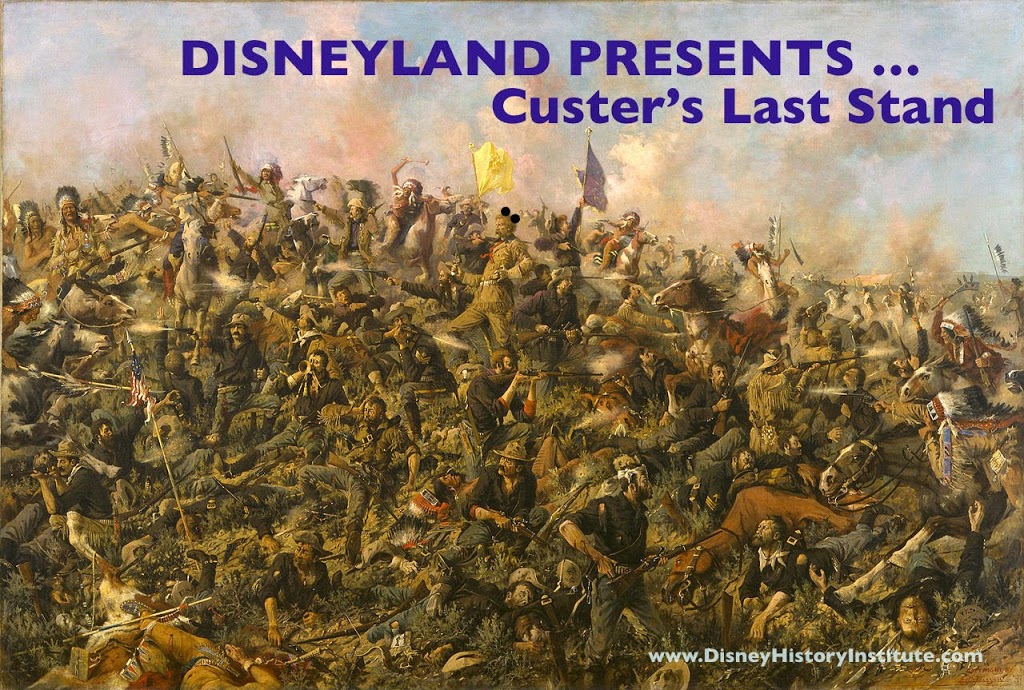 |
| Edgar Samuel Paxon’s “Custer’s Last Stand.” Oil on canvas, 1899. From the collection of the Buffalo Bill Historical Center, Cody, Wyoming. |
MASSACRE AT DISNEYLAND ~ One “C” Ticket Please
With the popularity of Disneyland hitting fever pitch in the five years following opening day, there was a mad rush within Disney for attraction ideas to handle the ever-increasing crowds. This particular concept came from Vincent H. Jefferds of the Character Merchandising Division in New York. Jefferds sent a direct Inter-Office Communication to Walt on June 2, 1960, with the subject line: “Ideas For New Park Attractions.”
His brilliant proposal was to do Custer’s Last Stand using the Circarama Treatment (which this author thinks would have been quite exciting!). The following is the word-for-word pitch:
“By passing through a cave pass we stumble into the last circle of defenders. From the rocky pit, which is graded upward to the screen, we see in Circarama the cavalry outpost surrounding us at some distance, and beyond them the hills. There, in classic fashion, mounted Indians appear on the hills miles away, silhouetted against the sky, first on one side, then on the other, et cetera. They charge the outpost and kill most of the cavalry. The others retreat towards us to the right and the left. The Indians come closer until they are war whooping at close range, circling the audience, firing directly at us in the pit.”
I think we can see why Jefferds ended up serving out an illustrious career in Character Merchandising in New York, and never did fulfill his dream of becoming a WED Imagineer.
MEMORY OF WALT ~ Louis Prima
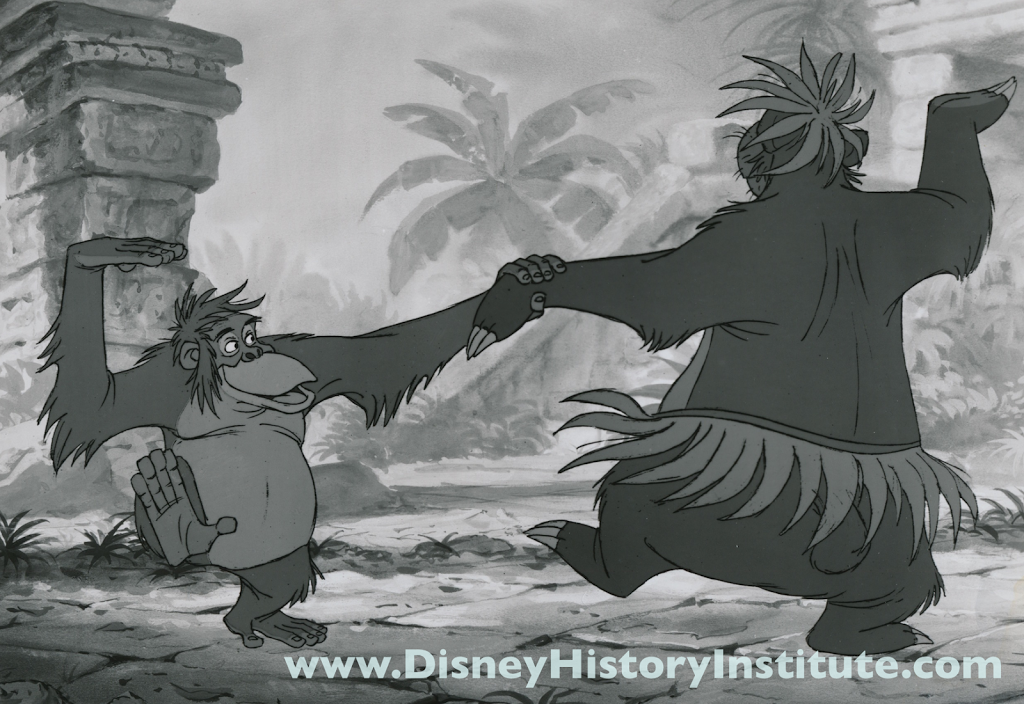 |
| Walt Disney’s “The Jungle Book” 1967 |
It’s been awhile since I’ve written about a memory of Walt here at DHI. So the hubbub a few weeks ago on the Institute’s Facebook page (lots of informed and intelligent Disney history discussions: DHI Facebook Group) was about the professorial (we are not all that bad) protestations about King Louie’s singing to Baloo being a hidden dream to be white (“I want to be like you …”). This discussion got me thinking about Jungle Book and also about the actor that uttered these racially insensitive words! And then I remembered an anecdote I happened across a couple of decades ago.
In Walt Disney’s “The Jungle Book” (you remember that overtly racist film!) King Louie was voiced by jazz musician Louis Prima, who had this to say about Walt Disney:
“The thing that struck me most about Mr. Disney was that he changed the atmosphere of every place he entered. He had a tremendous physical presence that affected those he came in contact with. The only other man I can think of that had the same powerful personal impact on people was Franklin Roosevelt. And yet there was nothing pretentious about him. Mr. Disney was dynamic, and still casual, friendly, with a great sense of humor. A fellow like Disney you wanted to be around.”
HEART FAILURE PHOTOS FROM THE 1930s
Remember when the big department stores would do fantastic window displays? Every holiday you could expect a new fantastical display window (think: the opening shot from “A Christmas Story”), and often even non-holiday periods featured whimsical displays. With Walt’s characters and cartoons increasing in popularity, it didn’t take long for companies to come his way asking for help on their windows. This wonderful image from the early 1930s shows the Disney decked-out window of the May Company. Contained within are some of the most sought after, early Disney collectibles (and thus, the heart attack). The larger figures (book, house and characters) were not merchandise you could buy (SADLY!), but rather window dressing–and these type of displays equal serious heart failure (quadruple bypass!) for Disney collectors.
There were numerous companies during this time period that specialized in department store display material–W.L. Stensgaard and Old King Cole come immediately to mind as companies that were used to create Disney store displays. In this case, it is likely that the May Co. did this display in house, as they had their own department that handled store displays.
So if the first window display photo didn’t make your heart tingle, perhaps this one will. This is a perfect example that not all window displays were about selling merchandise. This is a window advertisement for Pacific States Savings and Loan Company, and they are using a display of Mickey Mouse cels (heart okay now?) and photos of Walt and the Studio at work. I’ll leave it to someone with better eyes to translate the “Unpaid Movie Stars” piece of cheese (seriously, check it out, it is cheese!!).
With today’s windows being, for the most part, just a showcase of merchandise, I for one, would relish the return to the heyday of department store windows.
PHOTOS OF DISNEYLAND DIRT
I was reminded recently of a quote from an old friend. Bruce Gordon, Walt Disney Imagineer. Bruce once claimed that Disney fans love pictures of dirt. How true! So in homage to our “dearly-departed” friend (with all apologies to the Haunted Mansion) I present an Institute photo essay of Disneyland dirt.
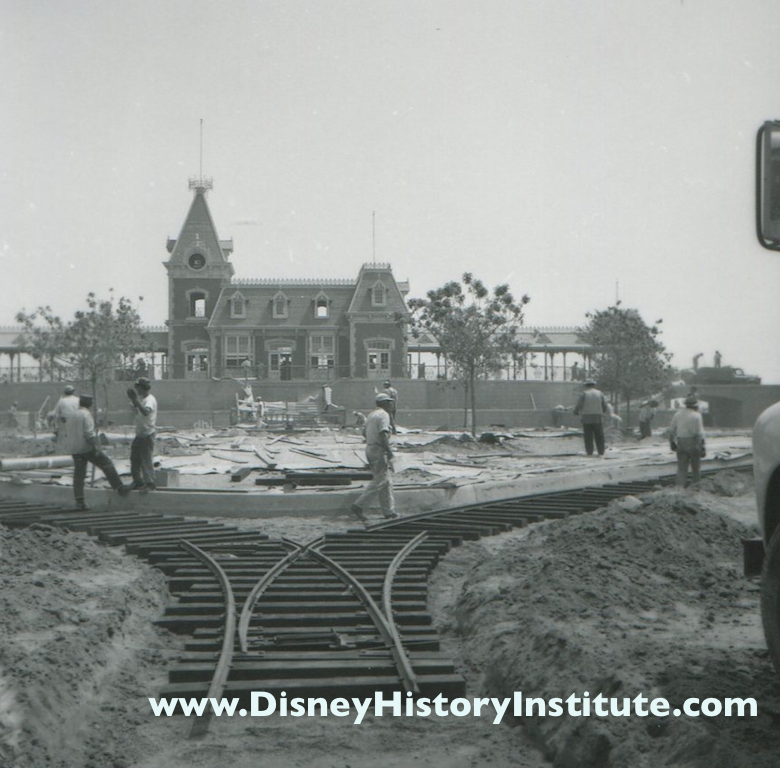 |
| Disneyland, shortly before opening. Photo taken by Walt’s First Imagineer, Roger Broggie, Sr. |
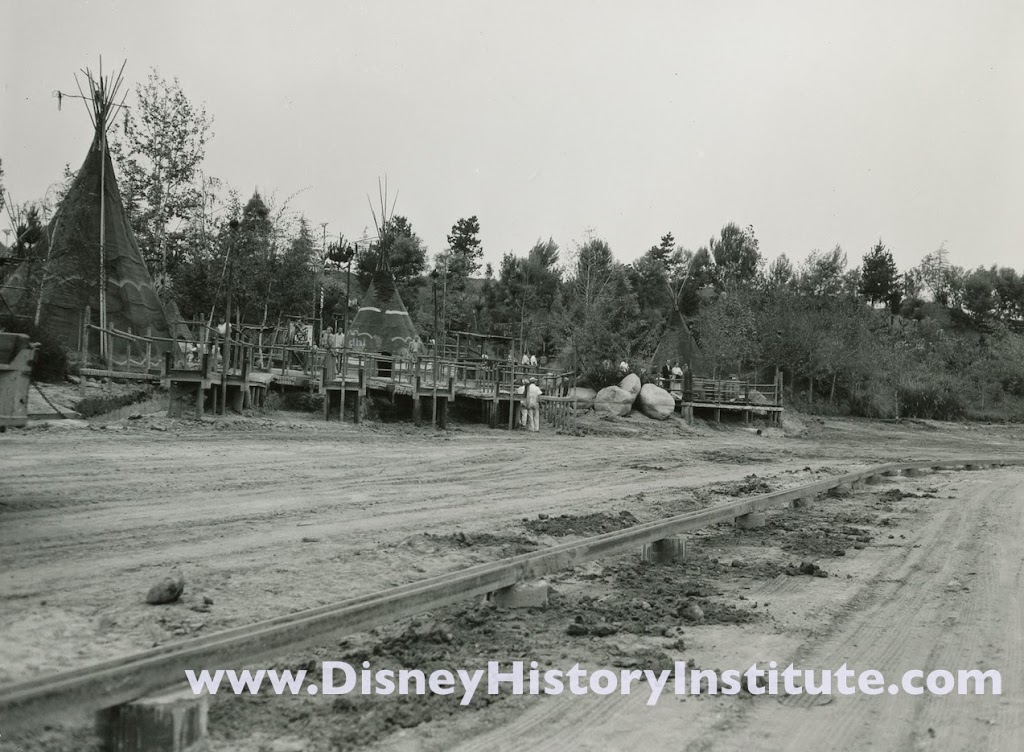 |
| Fall 1958, the draining of the Rivers of America. Most likely, the first time it was drained after opening. |
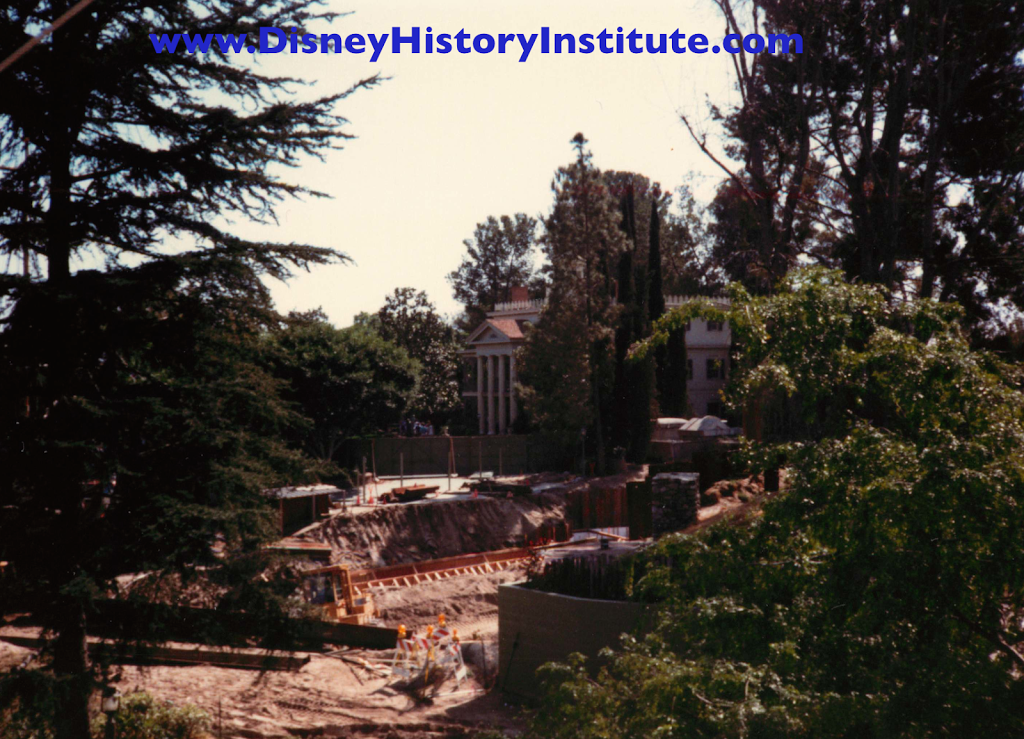 |
| A very nice shot of dirt! Featuring the construction from fall 1988 on Splash Mountain. |
WALT DISNEY FUTURIST
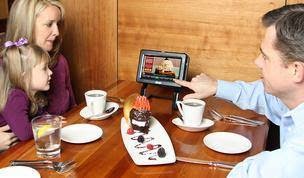 |
| Courtesy Chili’s & Ziosk. |
As a Disney Historian, I am always thinking about, well, Walt Disney. Recently I took my two sons to dinner at Chili’s. I was somewhat amazed that portable screens (with computers) were at each table. It is a new initiative where you can actually order from the screen, see food, request refills, and pay your bill. Mind you, my amazement was not that these devices were on my table, for such is the world we live in of computers, smart phones, and the like. As a Disney Historian, my amazement came from something I remembered that we have here in the DHI Archives.
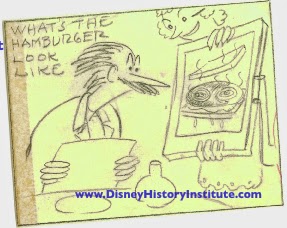 |
| Roy Williams drawing of his boss checking out the hamburger on a TV screen. Circa 1944-45 |
We have a rare document set here at the Institute on Disney’s early television development. From such comes this great image by Roy Williams showing Walt making his dinner selection on a television screen at the table. This was done around 1944 or 1945, so 78 years later Walt’s futuristic vision comes true! Or at least, that is how this Disney historian thinks.
SOME UNKNOWN WALT THOUGHTS ON TV
Walt’s interest in television started in the 1930s, and like most of his professional life, he bucked the trend, as almost all the movie moguls were anti-television. “The feeling of the motion picture business was that television was something we ought to fight, or we should ignore and maybe it would go away or some darn thing,” declared Walt. So strong were his feelings that at a gathering of motion picture trade press professionals Walt was asked to give a statement. He was not expecting to give any type of talk, and told them that he didn’t have anything important to say. After a few minutes, Walt declared, “Come to think of it, I think I have.” He got up before everybody and enthused: “I spent a week watching television and … I think the motion pictures ought to really get hep to it. I think it’s going to be one of the greatest selling mediums that they could have.” The group was shell shocked! The industry leader that asked him to give a statement said, “Oh, is that all you’ve got to say? Well, I thought you had something important to say.” Walt replied coldly, “Well, it may not be to you, but it is to me.”
But with the start of World War II, Walt’s interest in television was moved to a back burner, “because materials needed for military use” were the same that the TV industry needed, and said materials were in short supply, according to Roy Forkum in an unpublished essay “Disney Prepares for Television” (the same document set that provided the information and image from the above “Walt Disney Futurist”). Yet, even during the War, the cogs continued to turn in Walt’s brain, primarily because he was privy to some of the top secret advancements being made. In the same essay, Forkum comments on this technology, that “countless perfect devices which, when released to peace time industry, will, just as soon as they can be installed in telecasting stations, relays and receiving sets, give us surprisingly advanced and satisfactory television.”
Shortly after the War, the Disney brothers kept close tabs on the television industry and continued to seek out information. It would surprise most people to learn that in a room at the Studio there was “a great zoned map of the States, with colored pins for telecasting or relay stations, existing or proposed, that reminds one of an agency of sales or advertising. As news comes in of a new station erected, up goes a new pin with references to be found on file of the number of receiving sets actually in the area, and the area’s potentialities when things really get going.” (From the unpublished “Disney Prepares for Television” essay.)
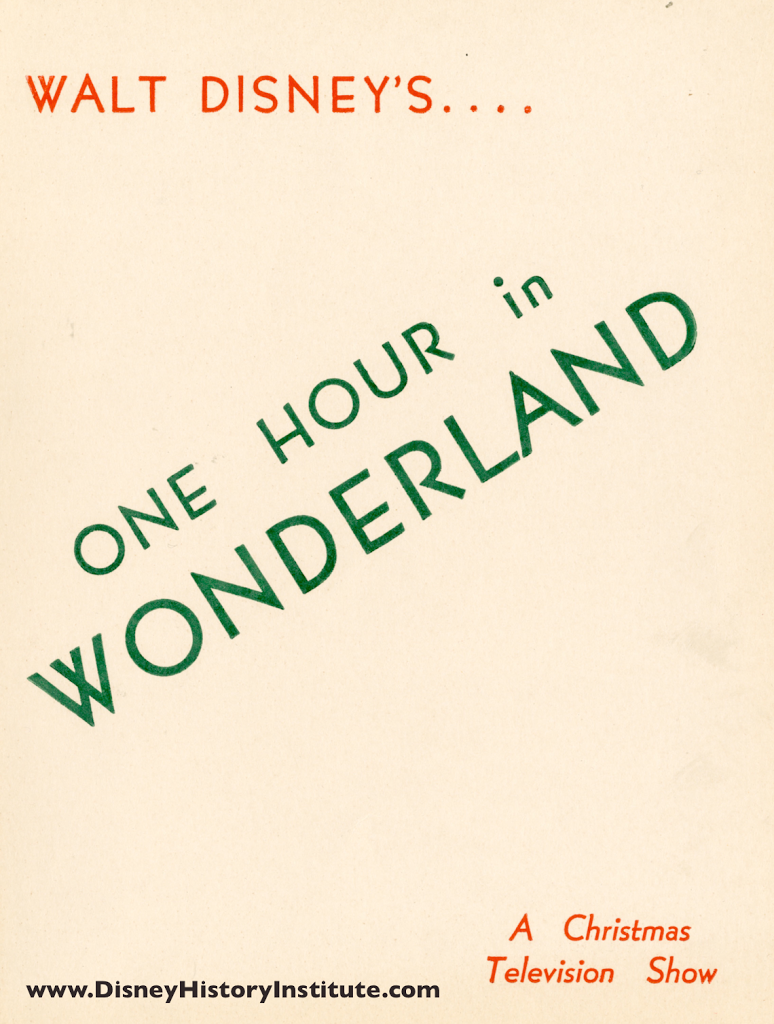 |
| Walt Disney Copyright Book for “One Hour in Wonderland” (1950). |
Of the two, not surprisingly, Roy was the most cautious. His interest was either in purchasing a television station, or if they were to go into production he wanted to wait until color became available. He felt that color “best represented” the Disney product. Walt, well, was Walt. He wanted to jump in with both feet. So the two came together and began experimenting, which resulted in Disney’s first television program, “One Hour in Wonderland” broadcast on Christmas day 1950. Within little time they got pressure from, according to Walt, “every source in the picture business!” Walt asserted that the message was short and emphatic, “Not to do it!”
Fortunately, like with most prognosticators advice to Walt, he didn’t listen. And the rest is, shall we say, history.
More to come on television in future DHI installments.
UNTIL NEXT TIME ….
Post up your comments below or over on our Facebook Group Site. (Even when things are slow on the blog, stuff is always happening over on Facebook).
PHOTO CREDIT
-“Custer’s Last Stand” painting, oil on canvas, 1899, by Edgar Samuel Paxson is courtesy of my home state and is from the collection of the Buffalo Bill Historical Center in Cody, Wyoming. (Worth a visit should you find yourself in the Yellowstone area of the great state of Wyoming.) Buffalo Bill Center of the West.
-One Hour in Wonderland images courtesy of my good pal Matt Crandall who spent a LOT of time with me running around Los Angeles in the early 1990s trying to find all the material that now resides in the Institute. You can visit his site which is not only a personal homage to Walt Disney’s Alice in Wonderland, but also shows what a serious case of OCD looks like. Check it out at: Vintage Disney Alice.

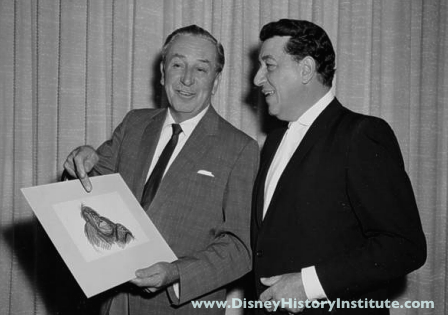
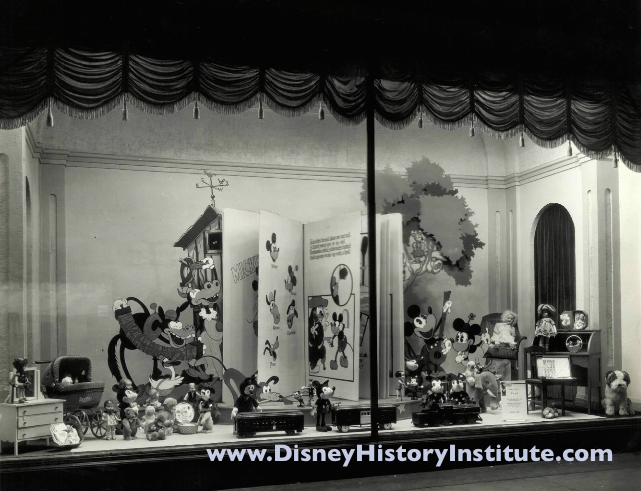
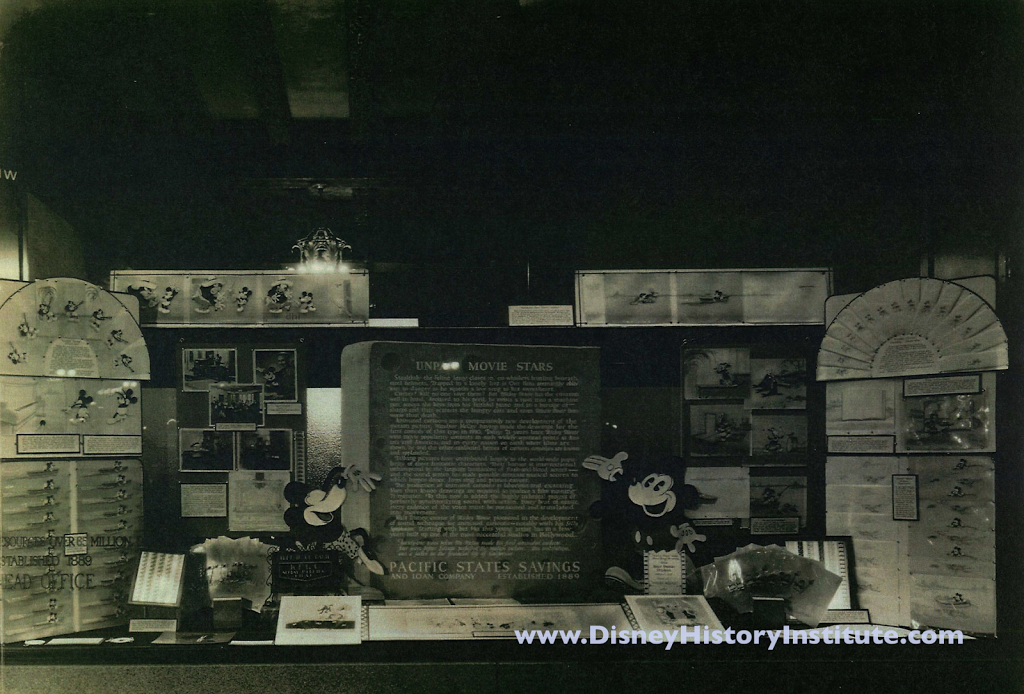
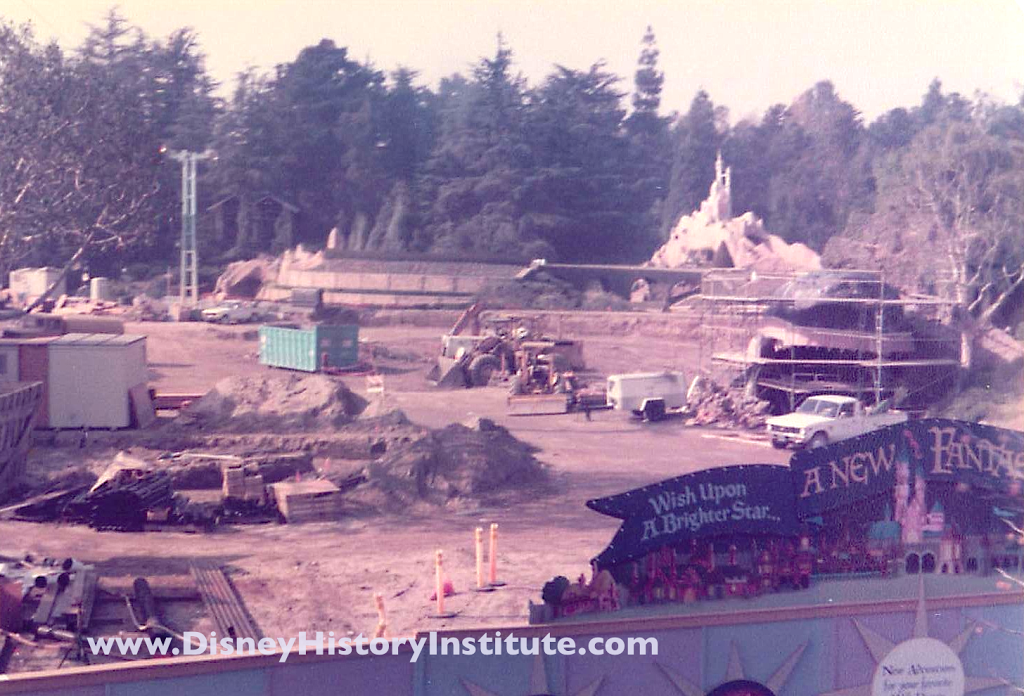
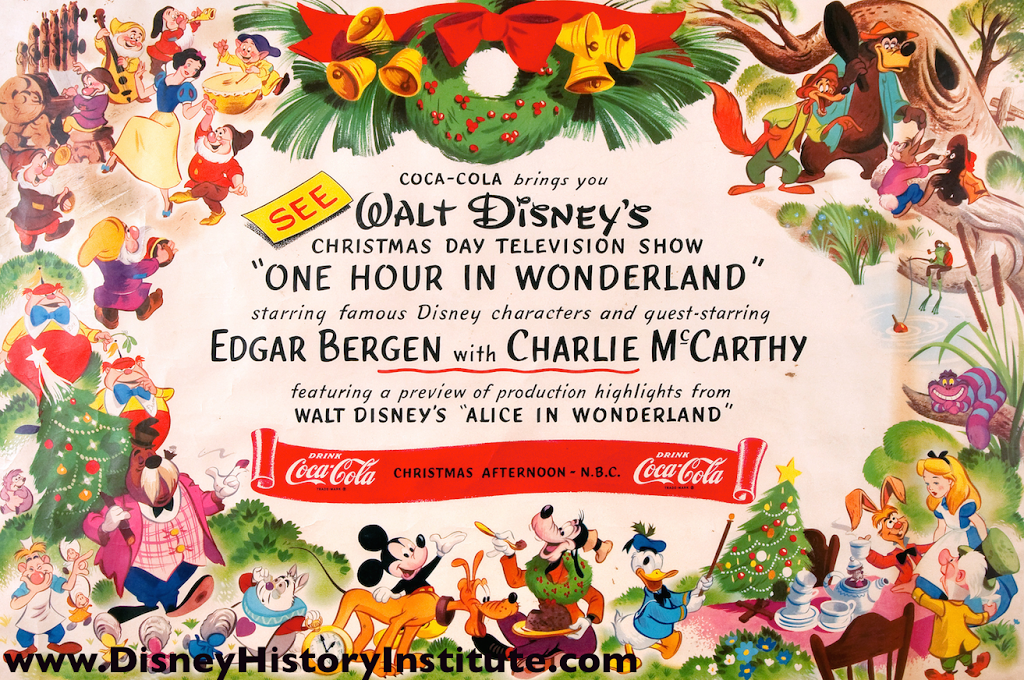
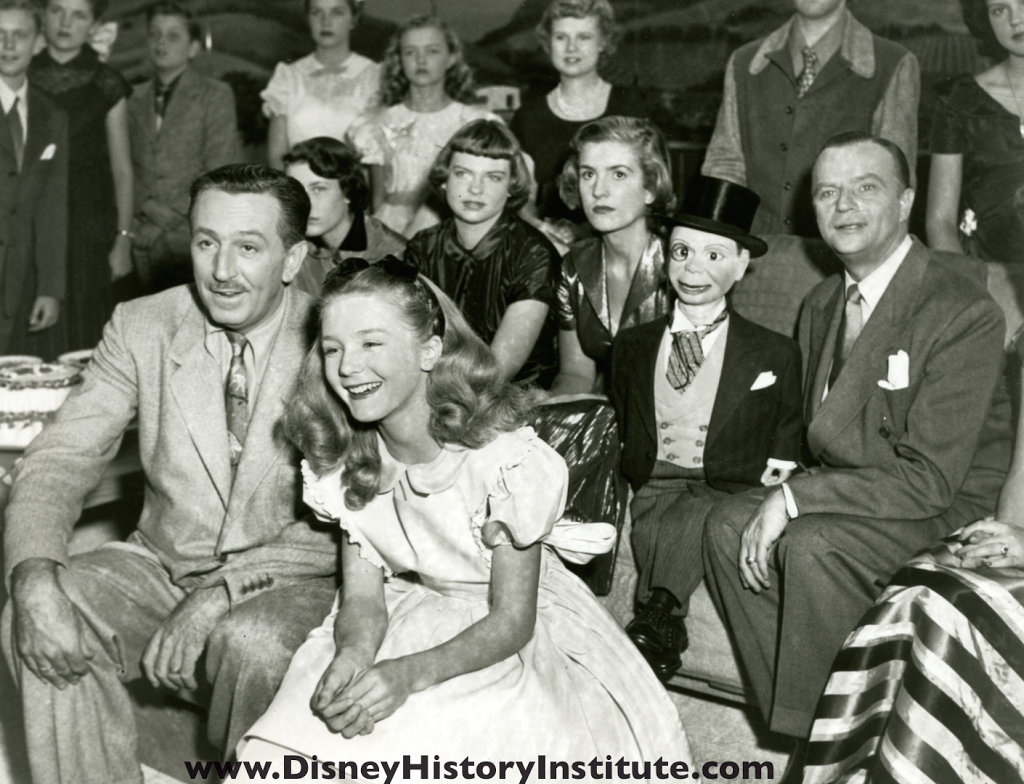
Wow…awesome post!
Connie. Thank you. Happy you enjoyed it. Please share the Institute with other’s that love Walt’s legacy. Paul
OCD? I don’t know what you’re talking about 🙂
Uh huh! Just like I’m not OCD about Disney history! Good times, good times!